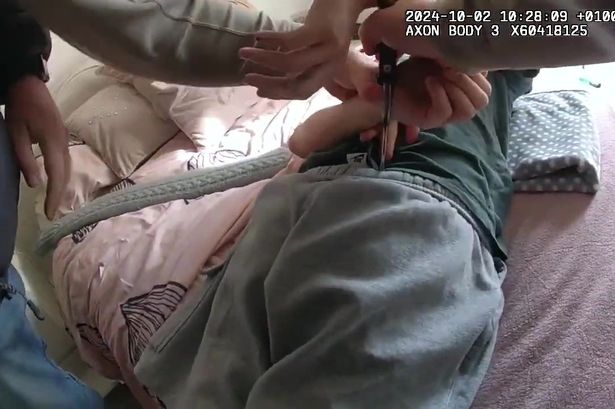In a noteworthy police operation, body-worn video footage documented the moment officers successfully located drug dealer Tallanius Bridgland, who was ultimately found concealed inside a wardrobe. The investigative efforts were led by law enforcement officials who had been tracking Bridgland’s activities as part of a larger initiative to combat drug-related crimes in the area. This situation illustrates both the challenges of policing drug distribution networks and the innovative tactics employed by law enforcement to address these issues effectively.
The operation aimed to dismantle a local drug distribution network that had been causing significant disturbances within the community. Officers utilized various intelligence-gathering methods, which included surveillance and tips from the public, to pinpoint Bridgland’s whereabouts. The use of body-worn cameras added a layer of transparency and accountability to the operation, allowing for a detailed record of events as they unfolded. This documentation not only serves as evidence in potential legal proceedings but also helps build trust between the police and the public they serve.
When officers arrived at the location believed to be used by Bridgland, they took swift action to secure the premises. Their strategic approach involved the deployment of sniffer dogs trained to detect narcotics, which significantly enhanced their capability to locate hidden drugs. Upon entering the property, they meticulously searched every room, showcasing their commitment to ensuring public safety and curtailing the distribution of illegal substances. The search ultimately proved fruitful when Bridgland was discovered in a concealed space, highlighting the lengths to which individuals will go to evade law enforcement.
The use of sniffer dogs proved crucial in this investigation, as these specially trained animals are adept at locating various types of drugs, from small quantities to larger stockpiles. Their keen sense of smell allows them to detect narcotics even when they are hidden in unlikely places. This capability not only assists the police in gathering evidence but also discourages drug activity, as potential traffickers recognize the challenges they face in concealing their operations. In this instance, the dogs contributed significantly to the successful outcome of the police operation.
Bridgland’s capture and the subsequent seizure of illegal narcotics are indicative of a broader trend in increased police efforts to combat drug-related crimes. The ongoing issue of drug abuse and trafficking continues to present significant challenges for law enforcement agencies worldwide. As strategies evolve, the use of technology and animal assistance, such as body-worn cameras and sniffer dogs, exemplifies the modern methods being adopted to enhance policing efficacy. This operation, in particular, demonstrates the potential effectiveness of a coordinated approach to tackling these complex issues.
In summary, the police operation that led to Tallanius Bridgland’s apprehension underscores the essential role of law enforcement in maintaining public safety and addressing illegal drug distribution. The integration of body-worn cameras and sniffer dogs showcases the innovative techniques being employed to enhance operational success. As communities continue to wrestle with the ramifications of drug-related crime, such pragmatic approaches will remain critical in the ongoing fight against substance abuse and trafficking, ultimately working towards a safer environment for all citizens.














